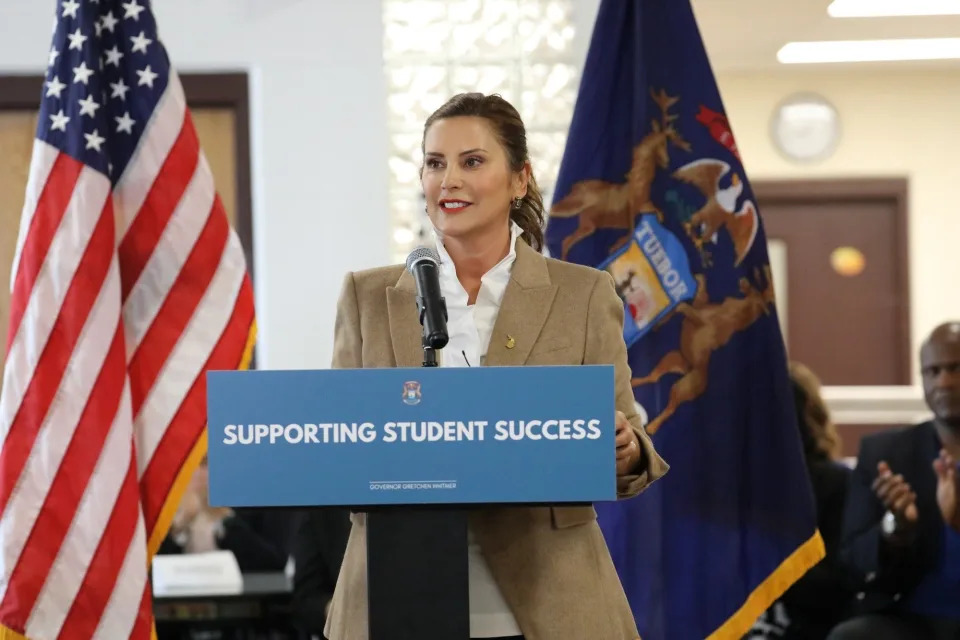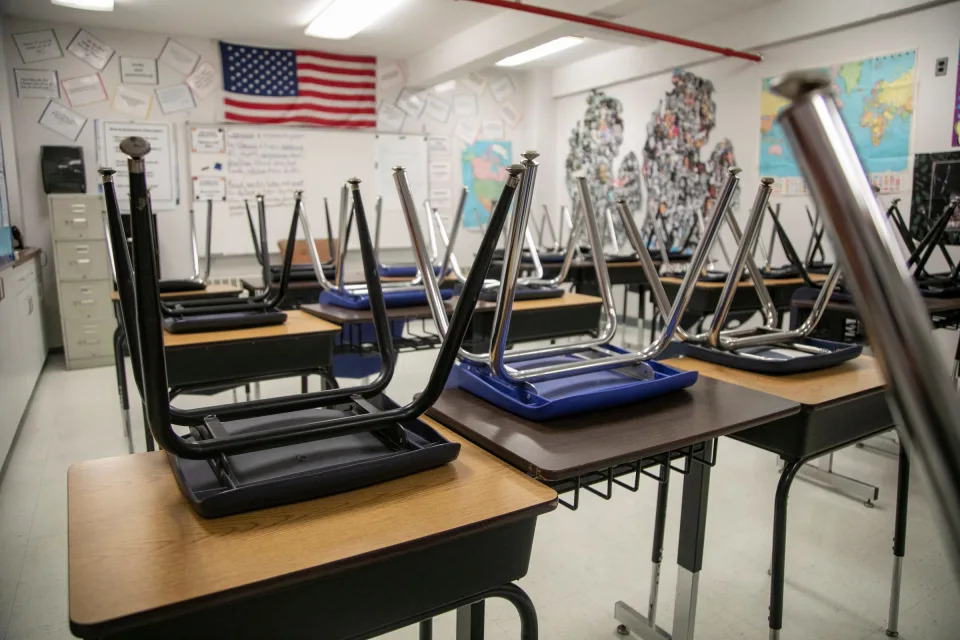Politico
A big lie, an attack on the Capitol — and soon, another indictment
Kyle Cheney – July 26, 2023

In a more than two-month blitz that ended in violence, Donald Trump lied, cajoled, inveighed and inspired his supporters to challenge the results of an election he lost. Now, special counsel Jack Smith appears on the verge of indicting Trump for those efforts.
Two and a half years have passed since the insurrection of Jan. 6, 2021. Yet investigators are still piecing together the breadth of Trump’s attempt to derail the transfer of power. It wasn’t a singular plan but in fact was many disparate schemes, led by distinct groups of advisers who embraced increasingly fringe strategies and were not always working in harmony.
Each arm of the effort was held together by one core lie with Trump at the center: that the election was stolen. And each tentacle has faced withering scrutiny from Smith’s investigators, who may ask a federal grand jury any day now to approve criminal charges tied to Trump’s election subversion, mere weeks after Smith charged Trump in a separate case for hoarding classified documents.
But if and when Smith brings charges related to Trump’s wide-ranging bid to cling to power, it will fall to the courts and a jury to determine whether Trump’s conduct — no matter the broad powers and immunities of the presidency — crossed the line into criminality.
The exact charges that Smith will seek are unclear, but here’s a look at the extraordinary range of conduct that will figure into them.
The disinformation campaign
Key figures: Rudy Giuliani, Sidney Powell
Even before votes were cast, Trump began conditioning his supporters to distrust the outcome of the 2020 election, insisting that mail-in voting — which states embraced to contend with Covid-era dangers — would be exploited by Democrats, foreign adversaries and bad actors to steal the election.
Trump rejected advice from his own allies, like campaign manager Bill Stepien and House GOP Leader Kevin McCarthy, to embrace mail-in voting as a way to drive turnout among his supporters. Instead, he set up mail ballots to be a scapegoat for his possible defeat.
In tandem with this effort was Trump’s plan, which he telegraphed to advisers, that he would declare victory on election night — when interim results were likely to be tilted in his favor due to delays in counting mail-in ballots — even though large shifts toward Joe Biden were anticipated as all votes were tallied in the days following the election.
Trump did just that. In the wee hours of the morning on Nov. 4, 2020, at the urging of Trump’s lawyer Rudy Giuliani and against the advice of virtually everyone else in his inner circle, Trump declared victory and warned his supporters that Democrats would try to steal the election.
Trump followed his early claim of victory with a weekslong campaign alleging — without evidence — widespread fraud in a handful of states Biden won: Michigan, Pennsylvania, Wisconsin, Georgia and Arizona. He and his allies filed dozens of lawsuits aimed at overturning the results or throwing out millions of votes in areas that favored Biden. Most were summarily dismissed for lacking substance or being filed in untimely ways.
A last-ditch bid to challenge the results, filed by Texas but supported by Trump in a separate legal brief, was turned aside by the Supreme Court.
Despite being rebuffed in the courts, wild conspiracies proliferated in pro-Trump circles. Figures like Sidney Powell, an attorney who represented Trump’s former national security adviser Michael Flynn in criminal matters, promoted the false notion that election machines made by Dominion Voting Systems had been manipulated by foreign governments to tip the election toward Biden.
In the meantime, Trump barraged the airwaves and his supporters’ inboxes with fundraising appeals and ads accusing Democrats of cheating, stuffing his campaign’s coffers even as many of his own advisers privately indicated that he had, in fact, lost the race.
Smith may be eyeing Trump’s fundraising and messaging tactics for potential crimes related to defrauding donors or the public at large.
The Electoral College, Part I: The states
Key figures: Rudy Giuliani, Jenna Ellis, Brad Raffensperger, John Eastman
As Trump’s efforts flailed in the courts, his allies began eyeing a second target: state legislatures. Although by late November election officials and governors had certified Biden’s victory, Giuliani began promoting the notion that state legislatures could simply override those decisions by citing fraud or “irregularities” that justified a different outcome.
To support this notion, Giuliani and Trump campaign attorney Jenna Ellis traveled to the states Trump was contesting and convened public hearings with sympathetic GOP legislators to highlight allegations of fraud. They pushed GOP-controlled legislatures to attempt to designate pro-Trump slates of presidential electors to replace or compete with Democratic electors that had been certified by election officials and governors.
Most notably, Trump leaned on Georgia Secretary of State Brad Raffensperger, a Republican, to simply “find” the votes that would put Trump ahead of Biden in the state. A recorded Jan. 2, 2021, phone call captured the lengthy exchange and has become fodder for Smith as well as investigators in Georgia.
Raffensperger balked. So did other state leaders, refusing to appoint their own slates of electors despite Trump’s increasing pressure.
This stage of Trump’s strategy is where John Eastman — a conservative attorney with fringe theories about the Electoral College — began gaining prominence in Trump’s orbit. He participated in Trump’s efforts to lean on state legislatures to act, appearing at public hearings convened by Republican legislators. Ultimately, Eastman would become the driving force behind Trump’s final, desperate bid to stay in power, a plan focused squarely on Jan. 6.
The Electoral College, Part II: The fake electors
Key figures: John Eastman, Rudy Giuliani
When the Electoral College met on Dec. 14, 2020, in 50 state capitals and Washington, D.C., no contested states had designated pro-Trump electors to compete with Biden’s electors. Nevertheless, in seven of those states, dozens of pro-Trump activists convened in state capitals, at the same time as Democratic electors, and cast ballots that they claimed made them legitimate presidential electors.
These “alternative” or “contingent” electors signed certificates claiming to be the states’ duly qualified electors and delivered them to the National Archives and Congress, following a process set out in federal law for actual presidential electors.
Enter Eastman. Emails released by the House select committee on Jan. 6 show that after the Electoral College ballots had been cast, he shifted his focus to legitimizing the uncertified electors.
The conservative attorney, who advised Republican legislators during the contested Bush v. Gore election of 2000, had been advising Trump and his allies since before the 2020 election, joining a working group assembled by attorney Cleta Mitchell to develop a post-election litigation strategy.
Within days of the Nov. 3 election, Mitchell asked Eastman to draw up a plan for state legislatures to appoint pro-Trump electors to supplant those certified by governors. Eastman obliged, and his plan, by late November, had made its way to the Oval Office.
Eastman, who would also author Trump’s Supreme Court brief in the Texas case, spent much of December leaning on state legislators to declare their elections invalid, citing fraud and irregularities, and use that as a pretense to appoint alternate electors. Eastman told allies at the time that without the imprimatur of a state legislature, these “contingent” electors wouldn’t have any legal force.
Mulling the seizure of voting machines
Key figures: Sidney Powell, Mike Flynn
After the Supreme Court refused to consider the Texas election challenge Dec. 11, 2020, Trump saw his options dwindle to an increasingly desperate few.
He had begun mobilizing members of Congress to formally challenge the election results Jan. 6, when the House and Senate were required to meet and count electoral votes. And he still hoped state legislatures would swoop in and send their own electors to Washington. But he also began eyeing a more extreme option.
Powell, Flynn and their allies had been in Trump’s ear about the prospect of invoking presidential authority to seize voting machines in the states he was contesting, using a combination of national security directives to justify the move. Various drafts of an executive order supporting such a move circulated in the White House (some of which were turned over to the Jan. 6 select committee).
The conversation culminated in a Dec. 18 Oval Office meeting with Trump, Flynn, Powell, Giuliani and others. At the meeting, Trump flirted with naming Powell a roving “special counsel” to pursue election-related matters, and Flynn advocated for taking the machines. But White House aides and Giuliani pushed back, and Trump ultimately opted against the move.
Hours later, in the middle of the night, Trump issued his first call to supporters to descend on Washington, D.C., on Jan. 6, 2021. “Be there,” he tweeted. “Will be wild.”
Deploying the Justice Department
Key figures: Jeff Rosen, Rich Donoghue, Jeff Clark, Pat Cipollone, Scott Perry
Trump was publicly frustrated that his own Justice Department had openly rejected his claims of widespread election fraud, and when Attorney General Bill Barr resigned in December 2020 — amid open conflict with the president — Trump eyed another mechanism to bolster his bid to remain in power.
Rep. Scott Perry (R-PA.), who espoused some fringe theories about election fraud, had begun connecting Trump with Jeff Clark, a Justice Department official who was sympathetic to his efforts. Several documented meetings or calls with Trump in late December 2020 and early January 2021 showed Clark had Trump’s ear during this crucial period.
Internally, Clark had been pressing Justice Department leaders to issue a letter to the states Trump was challenging, describing “irregularities” and recommending that their legislatures reconvene to consider whether Trump, rather than Biden, should be declared the winner.
Clark faced sharp pushback from Barr’s successor, acting attorney general Jeff Rosen, and his deputy, Rich Donoghue. But Trump briefly considered outflanking them by naming Clark acting attorney general and giving him the perch to implement the effort. But Trump backed down after a mass resignation threat by Trump Justice Department officials and top White House lawyers, including White House counsel Pat Cipollone.
Records revealed by the Jan. 6 select committee indicate that Trump may have briefly effectuated Clark’s appointment as acting attorney general before rescinding it.
The Electoral College, Part III: Pressuring Pence
Key figures: Mike Pence, John Eastman, Greg Jacob, Ken Chesebro
When all else failed, Trump turned firmly to Jan. 6, 2021, seen by his increasingly fringe group of allies as the ultimate deadline to stop the transfer of power to Biden. Though no states had endorsed alternative slates of electors, Congress was still in receipt of the unofficial slates sent in by pro-Trump activists.
The Jan. 6 session, required by the Constitution as well as an 1887 law known as the Electoral Count Act, has long been a formality, a ceremonial gathering to affirm the certified results of the states. Only a handful of times in American history have challenges been brought — and no challenge to a state’s electoral votes had ever been sustained.
But in Trump’s view, the Jan. 6 session was a last stand of sorts. And he had one final cudgel to attempt to stave off a Biden presidency: his vice president, Mike Pence.
The Constitution requires that the vice president — who doubles as the president of the Senate — preside over the counting of Electoral College ballots. So Trump spent the final weeks of his presidency pressing Pence to assert the power to simply refuse to count Biden’s electoral votes. Pence, Trump argued, could cite the competing slates of electors and declare the results to be in doubt, postponing the count and sending the matter back to the states for consideration.
His contention was backed by a coterie of fringe attorneys who had spent a frantic few weeks fleshing out what they dubbed “The president of the Senate strategy.” Emails obtained by the Jan. 6 select committee show Eastman communicating with lawyers like Giuliani and Ken Chesebro, who attempted to muscle through what they acknowledged was a constitutionally dubious plan.
But Pence resisted. He recognized that taking such steps would require violating provisions of the Electoral Count Act and would be an unprecedented assertion of single-handed authority to determine the outcome of the election.
Trump publicly and privately browbeat Pence to change course, but Pence repeatedly refused. On the morning of Jan. 6, Trump called Pence for one final, angry phone call in which he derided Pence for refusing to bend to his will. It was the last time they would speak that day.
As violence unfolded at the Capitol that afternoon, Eastman and Giuliani continued to press Trump’s allies to stop the election process. Giuliani called Republican members of Congress and asked them to mount continued challenges to the results that might buy more time, and Eastman corresponded with a Pence aide, counsel Greg Jacob, in a final effort to get Pence to delay the electoral vote count.
Jacob pushed back on Eastman, even as he fled from the first wave of rioters. He has since become a key witness in California bar discipline authorities’ bid to strip Eastman of his law license over his Jan. 6-related actions.
The rally
Key figures: Ali Alexander, Alex Jones, Steve Bannon
After Trump told his supporters to “be there” for a “wild” protest in Washington, D.C., on Jan. 6, a large pro-Trump faction responded. The tweet invigorated groups like Ali Alexander’s “Stop the Steal” organization, which made plans for a rally on Capitol grounds Jan. 6. Women for America First organized a rally near the White House that became Trump’s primary event that day.
The rally was the primary reason tens of thousands of Trump supporters descended on Washington. And Trump’s tweet imploring them to “be there” has figured into dozens of prosecutions stemming from the riot that followed the rally. It was the moment, prosecutors have argued, that extremists like Proud Boys leader Enrique Tarrio and Oath Keepers leader Stewart Rhodes began mobilizing large contingents to descend on Washington. Both have since been convicted of seditious conspiracy.
The far-right conspiracy theorist and broadcaster Alex Jones, who attended the rally, helped lead hundreds of people from the Ellipse to the Capitol. Nearby, at the Willard Hotel, a pro-Trump “war room” was working to manage the ongoing efforts to overturn the election, featuring participation from Steve Bannon, Giuliani and other Trump allies.
Trump used the rally crowd as a means to pressure Congress, telling them that if they didn’t “fight” to stop Biden’s victory they wouldn’t “have a country anymore.” He then pointed them to the Capitol, where he urged them to march “peacefully and patriotically” to reject the election results.
But Trump’s rhetoric was overwhelmingly packed with apocalyptic imagery, which has led at least one federal judge to say he might plausibly be accused of inciting the violence that followed.
The riot
Key figures: Mark Meadows, Mike Pence, Pat Cipollone
After Trump’s rally speech, he retreated to the White House — furious that his Secret Service detail had resisted his desire to go to the Capitol, where violence had begun to break out.
Instead, he withdrew to the Oval Office dining room, where he watched the chaos at the Capitol unfold on TV. While watching, he resisted desperate pleas from allies like McCarthy and other Republicans in Congress, aides, advisers and family members to explicitly tell his supporters to go home. For hours, Trump ignored those appeals while outnumbered police officers were battered and members of Congress — and Pence — evacuated to safety.
While Pence fled, Trump tweeted an attack on his vice president, saying he lacked the courage to stop Biden’s election. That tweet appeared to inflame the crowd; the Jan. 6 committee has shown how the mob intensified in the ensuing moments and many on hand at the Capitol shared it with those around them.
Throughout the day, Trump held court with a long list of advisers, like chief of staff Mark Meadows and Cipollone. Both have become key witnesses in Smith’s probe. Pence has also testified to the special counsel.
When Trump finally did tell supporters to go home, 187 minutes after the first police line was breached, many in the crowd seemed to respond. Videos from the riot show supporters sharing the tweet with one another and heeding his call.
The damage, however, was done. Five people died during or shortly after the attack; hundreds more were injured. In the 30 months since, more than 1,000 rioters have been criminally charged for what they did Jan. 6. Now, Smith’s next moves — and the secret vote of a grand jury that has undoubtedly heard all of the evidence above — will determine whether Trump, and members of his inner circle, will stand trial, too.

















